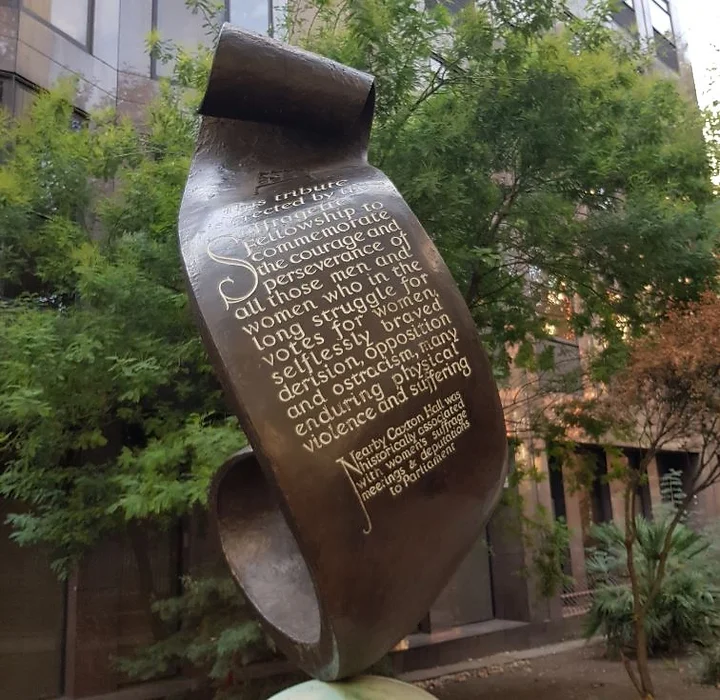
A Brief History of Women’s Suffrage
Elizabeth Streatfeild-James, BA History, Durham University
The Representation of the People Act, passed in 1918 gave women the right to vote in national elections for the first time. It gave 8.4 million women over the age of 30, who owned property, the right to vote and lowered the voting age for men to 21. Full suffrage for all women and men over the age of 21 was not actually achieved until 1928, however 1918 marks a key point in the battle for gender equality.
The two most prominent groups associated with the battle for women’s suffrage are the National Union of Women’s Suffrage Societies (‘NUWSS’, more commonly known as the suffragists) and the Women’s Social and Political Union (‘WSPU’, known as the suffragettes). The NUWSS was founded by Millicent Fawcett in 1897 as a democratic umbrella organisation for all suffrage societies in the United Kingdom and aimed to achieve women’s suffrage through peaceful and legal means. The WSPU was set up by Emmeline Pankhurst and her daughters Christabel and Sylvia in 1903 and used more militant tactics to gain relevance. These two groups are widely credited with achieving the vote for women in 1918 and were famous for the demonstrations and disruptions they caused.
However, for many, the idea that the battle for the vote was largely won by 1900 is now a more common belief. By 1900 all of the key societies that campaigned for women’s suffrage had been set up, opinions were changing and international pressures were encouraging parliament to debate and consider the issue. From 1900, it was merely a waiting game encouraged by the militant tactics of the suffragettes and the peaceful demonstrations of the suffragists.
Theoretical support for women’s groups began as early as the 1830s with groups being formed to discuss women’s rights. However, the movement was really begun in April 1866 when a petition for women’s suffrage was organised: by June it had 1,499 signatures, including prominent figures of the time like Florence Nightingale and Josephine Butler. The Primrose League (an organisation for spreading conservative principles in the United Kingdom) was formed in 1883. It was formed with the aim to get women into campaigning and involved on the political scene and by the 1890s it had 1 million members. Support for women’s suffrage grew throughout the century. Prominent figures like John Stuart Mill, a member of the House of Commons, tried to get women the right to vote with suggested changes to the 1867 Reform Bill however he was unsuccessful. Some local acts were passed such as the 1894 Parish and Rural District Act which extended local voting rights for women on county councils.
Towards the turn of the century international pressure built on the government to award women the vote. New Zealand and Australia gave women the vote in the 1890s and many states in America followed suit starting with Wyoming in 1890 and Colorado in 1893.
The groundwork was set for the 1918 Reform Act by the turn of the century: opinions were changing and women were allowed onto local bodies. For example, Emmeline Pankhurst was elected as a poor law guardian in 1894 and after this she spent time visiting workhouses in Manchester where she witnessed the shocking levels of poverty and tried to improve the conditions. The impact that women had in these places was vast and allowed them to prove to the government that they could handle the supposed pressures of voting.
